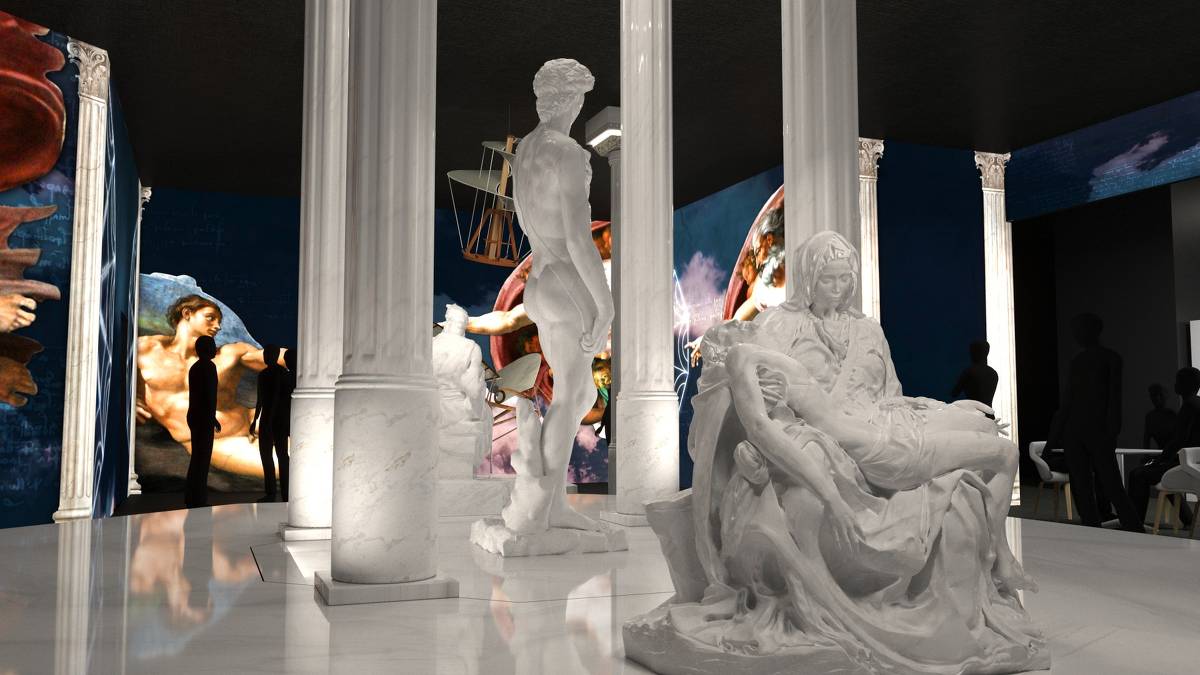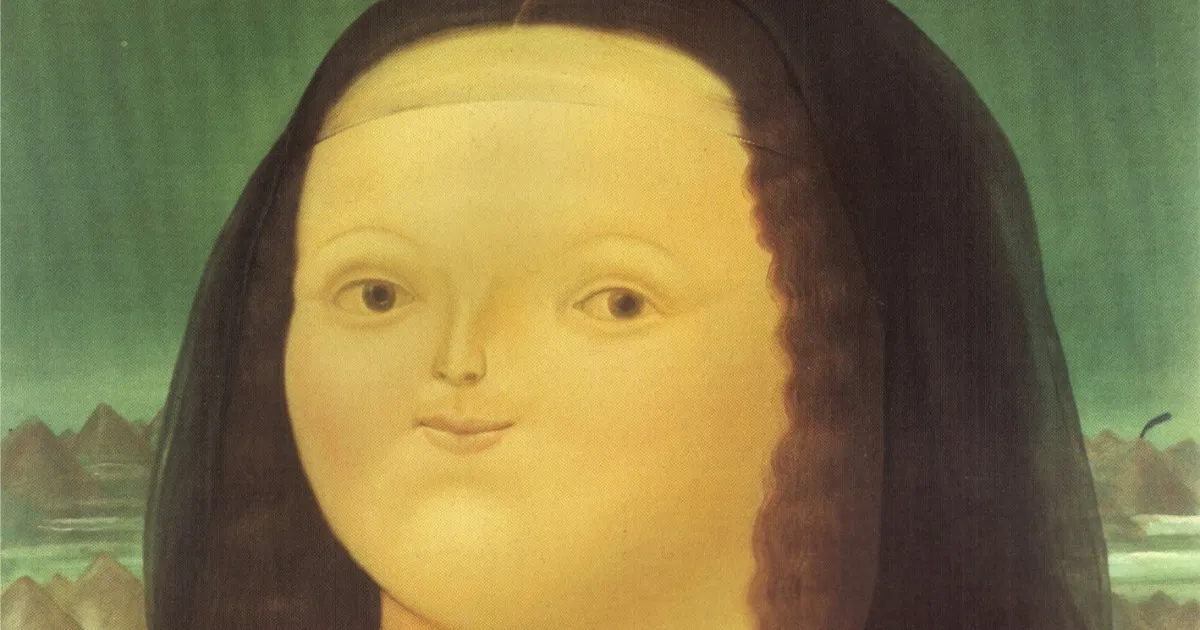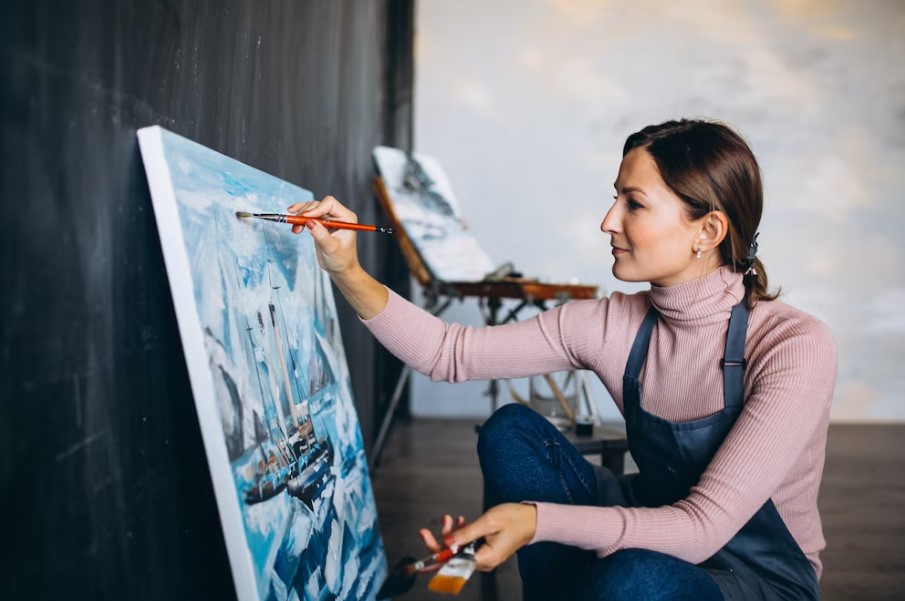Historical miniature art in court culture unveils a fascinating world where power, prestige, and exquisite craftsmanship converged to create treasures that still captivate us today.
✨ The Enchanting Origins of Miniature Art in Royal Courts
Miniature art emerged as one of the most prestigious forms of artistic expression within royal courts across various civilizations. These tiny masterpieces, often no larger than a playing card, required exceptional skill, patience, and access to the finest materials available only to the elite classes. From the illuminated manuscripts of medieval Europe to the intricate portraits of Mughal India, miniature paintings served as symbols of wealth, education, and refined taste.
The tradition of creating miniature artworks can be traced back to ancient Egypt and Persia, where artists adorned manuscripts and personal items with detailed illustrations. However, the golden age of court miniature art truly flourished between the 15th and 18th centuries, when European and Asian royal courts competed to employ the most talented artists who could capture their likeness, document their achievements, and preserve their legacy in these intimate artworks.
What made miniature art particularly valuable was not merely its size but the extraordinary detail achieved within such limited space. Artists used brushes made from single hairs, ground precious pigments including lapis lazuli and vermilion, and worked under optimal lighting conditions to create portraits that could reveal every texture of fabric, every jewel in a crown, and every subtle expression on a noble’s face.
🎨 Materials and Techniques: The Secret Behind Court Miniatures
The creation of historical miniature art demanded materials that only the wealthiest patrons could afford. Court artists worked primarily on vellum, ivory, or specially prepared paper, each surface requiring different preparation techniques to achieve the smooth finish necessary for fine detail work. The choice of support material often indicated the status of the patron and the intended purpose of the miniature.
Pigments used in court miniatures were extraordinarily expensive and sourced from across the known world. Ultramarine blue came from Afghan lapis lazuli, cochineal red from Central American insects, and gold leaf was applied in thin layers to create luminous backgrounds and highlight clothing details. These materials transformed each miniature into a precious object worth its weight in gold.
The technical process involved multiple stages. Artists first created a detailed underdrawing, often using silverpoint or graphite. They then built up layers of transparent watercolor washes, gradually adding detail and depth. The finest work required magnifying glasses and steady hands capable of executing brushstrokes invisible to the naked eye. A single portrait miniature could take weeks or even months to complete, depending on the complexity and the patron’s requirements.
Essential Tools of the Miniature Artist
Court miniaturists relied on specialized tools that set them apart from other painters. Their brushes, made from squirrel tail hair or even single hairs from kolinsky sables, allowed for unprecedented precision. Magnifying lenses helped artists see the minute details they were creating, while mixing palettes were kept scrupulously clean to maintain color purity.
The workspace itself was crucial. Court artists typically worked in well-lit studios with northern exposure to avoid direct sunlight that could distort colors. They maintained strict control over humidity and temperature, as these factors affected how pigments dried and adhered to surfaces. This level of environmental control was only possible within royal palaces and aristocratic residences, further cementing miniature art as an elite pursuit.
👑 Miniature Portraits: Capturing Royal Essence in Miniature Scale
Portrait miniatures served multiple functions within court culture beyond mere decoration. These intimate artworks acted as diplomatic gifts, tokens of affection between separated lovers, commemoration of important life events, and powerful statements of dynastic continuity. A well-executed portrait miniature could convey not just physical likeness but also the character, status, and aspirations of its subject.
The miniature portrait tradition reached its zenith in 16th-century England under the Tudor court. Artists like Nicholas Hilliard and Isaac Oliver created exquisite portraits of Elizabeth I and her courtiers, establishing conventions that would influence European miniature painting for centuries. These works featured elaborate symbolism, from flowers representing virtues to specific color choices conveying political allegiances.
In Mughal India, portrait miniatures took on distinctive characteristics, blending Persian artistic traditions with Indian aesthetics. Emperors like Akbar and Jahangir maintained extensive ateliers where teams of artists collaborated on manuscripts and portrait albums. These works documented court life with remarkable accuracy, providing modern historians with invaluable visual records of clothing, architecture, and social customs.
The Language of Symbols in Court Miniatures
Every element within a court miniature carried meaning. The subject’s clothing, jewelry, and poses were carefully orchestrated to communicate status and virtue. Background elements—whether architectural features, landscapes, or heraldic devices—reinforced the narrative the patron wished to convey about themselves or their family.
Colors held particular significance. Purple signified royalty and imperial power, while white represented purity and innocence. Gold backgrounds elevated subjects beyond earthly realms, suggesting divine favor or exceptional virtue. Even the size and shape of the miniature itself conveyed messages: circular formats suggested eternity and perfection, while oval shapes became associated with personal, intimate portraits.
🏰 The Social Function of Miniatures in Court Life
Miniature art played a central role in the complex social dynamics of court life. These portable artworks facilitated relationships across vast distances in an era before photography. Royal families exchanged portrait miniatures when arranging marriages, allowing potential partners to see each other’s likeness before meeting. The quality of the miniature reflected the importance placed on the proposed alliance.
Within court circles, commissioning and displaying miniatures demonstrated cultural sophistication and financial resources. Courtiers competed to own the finest examples, often wearing them as jewelry or displaying them in specially designed cabinets. The ability to discuss miniature art knowledgeably became a mark of education and refinement, essential for advancing in court hierarchies.
Miniatures also served as political tools. Monarchs distributed portrait miniatures bearing their image to favored courtiers, creating networks of loyalty and obligation. Accepting such a gift implied allegiance, while displaying it prominently demonstrated one’s position within the power structure. Conversely, the removal or destruction of miniatures could signal dramatic shifts in political fortunes.
🌍 Regional Variations: From European Courts to Asian Empires
European miniature art developed distinctive regional characteristics. French miniaturists favored softer, more romantic compositions with elaborate frames, while Italian artists emphasized classical proportions and mythological references. German and Swiss miniaturists became renowned for their technical precision and attention to costume details, creating works that serve as valuable historical documents of period fashion.
The Ottoman court maintained its own miniature tradition, distinct from both European and Persian influences. Ottoman miniatures featured flat perspectives, bold colors, and narrative compositions documenting military campaigns, court ceremonies, and architectural achievements. These works prioritized symbolic representation over naturalistic portrayal, reflecting different aesthetic values and philosophical approaches to art.
Persian miniature art influenced courts throughout Central and South Asia, establishing conventions that persisted for centuries. The Safavid dynasty’s court artists developed highly refined styles characterized by intricate patterns, jewel-like colors, and sophisticated compositions. Their techniques for depicting textiles, gardens, and architectural settings influenced miniature painting from Turkey to India.
The Mughal Synthesis: East Meets West in Miniature Form
Mughal miniature painting represents perhaps the most successful fusion of diverse artistic traditions. When Mughal emperors invited Persian artists to their courts, these masters encountered Indian artistic traditions and, later, European artistic concepts brought by Jesuit missionaries and traders. The resulting synthesis created a unique style combining Persian elegance, Indian color sensibilities, and European naturalism.
Mughal court artists developed sophisticated techniques for rendering volume, texture, and atmospheric perspective previously unseen in Asian miniature traditions. They portrayed individual faces with unprecedented realism while maintaining the decorative qualities valued in Persian art. Imperial workshops produced massive illustrated manuscripts containing hundreds of miniatures, requiring coordination among dozens of specialized artists.
💎 Collecting and Preserving Miniature Masterpieces
The collecting of miniature art became a passion among European and Asian elites. Royal cabinets of curiosities devoted entire sections to miniature paintings, often arranging them by artist, subject, or dynasty. These collections demonstrated erudition and provided opportunities for scholarly study and appreciation among cultivated visitors.
Conservation presented unique challenges. The delicate nature of miniature paintings made them vulnerable to light damage, humidity, and physical handling. Court collectors developed specialized storage solutions, including velvet-lined cases and albums with protective tissue papers. The most valuable miniatures were shown only on special occasions, preserving them for future generations while maintaining their aura of exclusivity.
Today, major museums worldwide house extensive collections of historical miniature art. Institutions like the Victoria and Albert Museum in London, the Metropolitan Museum of Art in New York, and various museums across India and Iran preserve thousands of examples. Modern conservation techniques, including digital imaging and climate-controlled storage, ensure these fragile masterpieces survive for future study and appreciation.
📚 Miniature Art in Illuminated Manuscripts
Before standalone miniature portraits became fashionable, court artists applied their skills to illuminated manuscripts. These luxury books, commissioned by royalty and high church officials, featured elaborate miniature paintings alongside decorative initials and borders. The finest examples, such as the Très Riches Heures du Duc de Berry, contain miniatures of breathtaking quality that document medieval court life in extraordinary detail.
Manuscript miniatures served multiple purposes. They illustrated religious texts, making complex theological concepts accessible to viewers who might not read Latin. They documented historical events, providing visual records of battles, coronations, and other significant occasions. They also displayed the patron’s wealth and piety, as the finest manuscripts required years of work by teams of specialized artists and scribes.
The transition from manuscript illumination to standalone miniature painting occurred gradually during the Renaissance. As printing technology made books more accessible, the unique value of hand-painted miniatures shifted toward portable portrait art. However, the technical skills and aesthetic sensibilities developed through manuscript illumination directly influenced the emerging portrait miniature tradition.
🎭 Beyond Portraits: Narrative Miniatures and Court Entertainment
While portraits dominated European miniature art, Asian court traditions emphasized narrative compositions. Persian and Mughal miniatures often depicted scenes from literature, history, and courtly entertainment. These complex compositions might include dozens of figures engaged in various activities, all rendered with meticulous attention to detail despite the small scale.
Hunting scenes were particularly popular, showcasing the patron’s prowess and bravery. Court artists developed sophisticated techniques for depicting movement, energy, and spatial relationships within these dynamic compositions. The finest examples achieve remarkable narrative clarity, guiding viewers’ eyes through complex scenes while maintaining overall compositional harmony.
Musical performances, poetry readings, and garden parties provided additional subjects for narrative miniatures. These works document the cultural life of courts, showing the instruments played, the clothing worn, and the social interactions that defined elite culture. They offer modern scholars invaluable insights into daily life among the ruling classes across various civilizations.
🔍 The Decline and Revival of Miniature Art Traditions
The tradition of court miniature painting gradually declined during the 19th century as photography emerged as a faster, more affordable method of creating portraits. The social structures that supported court artists eroded as monarchies weakened or disappeared. Many miniaturists adapted their skills to other media or found patronage outside traditional court circles.
However, interest in historical miniatures never completely disappeared. Collectors continued valuing antique examples, and some artists maintained traditional techniques, often supported by cultural preservation societies or wealthy patrons nostalgic for courtly elegance. The Arts and Crafts movement briefly revived interest in miniature painting as part of broader efforts to preserve traditional craftsmanship against industrial standardization.
Contemporary artists continue exploring miniature art, though often with modern twists. Some create hyper-realistic miniatures using traditional techniques, while others subvert conventions by depicting contemporary subjects or incorporating unconventional materials. Museums and galleries periodically mount exhibitions celebrating historical miniature art, introducing new audiences to these remarkable works and inspiring fresh appreciation for the skill they represent.
🌟 The Enduring Legacy of Court Miniature Art
The influence of historical miniature art extends far beyond museum collections. These works established aesthetic principles and technical standards that continue influencing artists today. The emphasis on meticulous craftsmanship, the careful consideration of color relationships, and the integration of symbolic elements remain relevant to contemporary visual culture.
Miniature art also provides invaluable historical documentation. Through these works, we can study period clothing, jewelry design, interior decoration, and social customs with remarkable accuracy. They preserve faces of historical figures who would otherwise remain anonymous, humanizing the past and creating personal connections across centuries.
Perhaps most importantly, miniature art reminds us of the value of patience, skill, and dedication to craft. In an era of instant digital reproduction, these laboriously created works testify to different values—the pursuit of perfection, the joy of creating beauty through sustained effort, and the desire to create objects that transcend their immediate moment to speak across generations.
The world of historical miniature art in court culture represents a pinnacle of human artistic achievement. These tiny masterpieces concentrated extraordinary skill, expensive materials, and profound meaning into spaces small enough to hold in one’s hand. They served the social, political, and emotional needs of the elite while documenting their world with unparalleled intimacy and detail. Today, they continue captivating viewers, offering windows into vanished worlds of lavish lifestyle, refined taste, and artistic excellence that defined court culture across civilizations.
Toni Santos is a visual chronicler and historical researcher who explores the lost language of healing through forgotten instruments and ancient medical design. With a delicate blend of curiosity and reverence, Toni uncovers the mysterious tools once used in temples, apothecaries, and folk practices—objects that echo a time when healing was both art and ritual.
Rooted in a fascination with the intersection of medicine, myth, and craftsmanship, his work traces how past civilizations understood the body, spirit, and cosmos through tools now obscured by time. From vibrational tuning forks and herbal infusion vessels to symbolic scalpels carved with protective motifs, Toni’s visual storytelling gives new life to the technologies that once held deep cultural and curative power.
With a background in historical illustration and material culture, Toni reconstructs these instruments with artistic precision—offering not just images, but narratives that reveal the beliefs, fears, and hopes embedded in the tools of care.
As the visionary behind Vizovex, Toni shares curated archives, interpretive essays, and artifact-inspired artworks that help audiences reconnect with the ancestral roots of healing and the poetic devices once used to restore balance.
His work is a tribute to:
The craftsmanship of early healing technologies
The spiritual symbolism behind medical instruments
The intimate connection between body, tool, and ritual
Whether you’re an enthusiast of forgotten sciences, a student of holistic traditions, or a seeker of the obscure, Toni welcomes you into a world where healing was sacred, and every tool told a story—one wound, one charm, one cure at a time.





